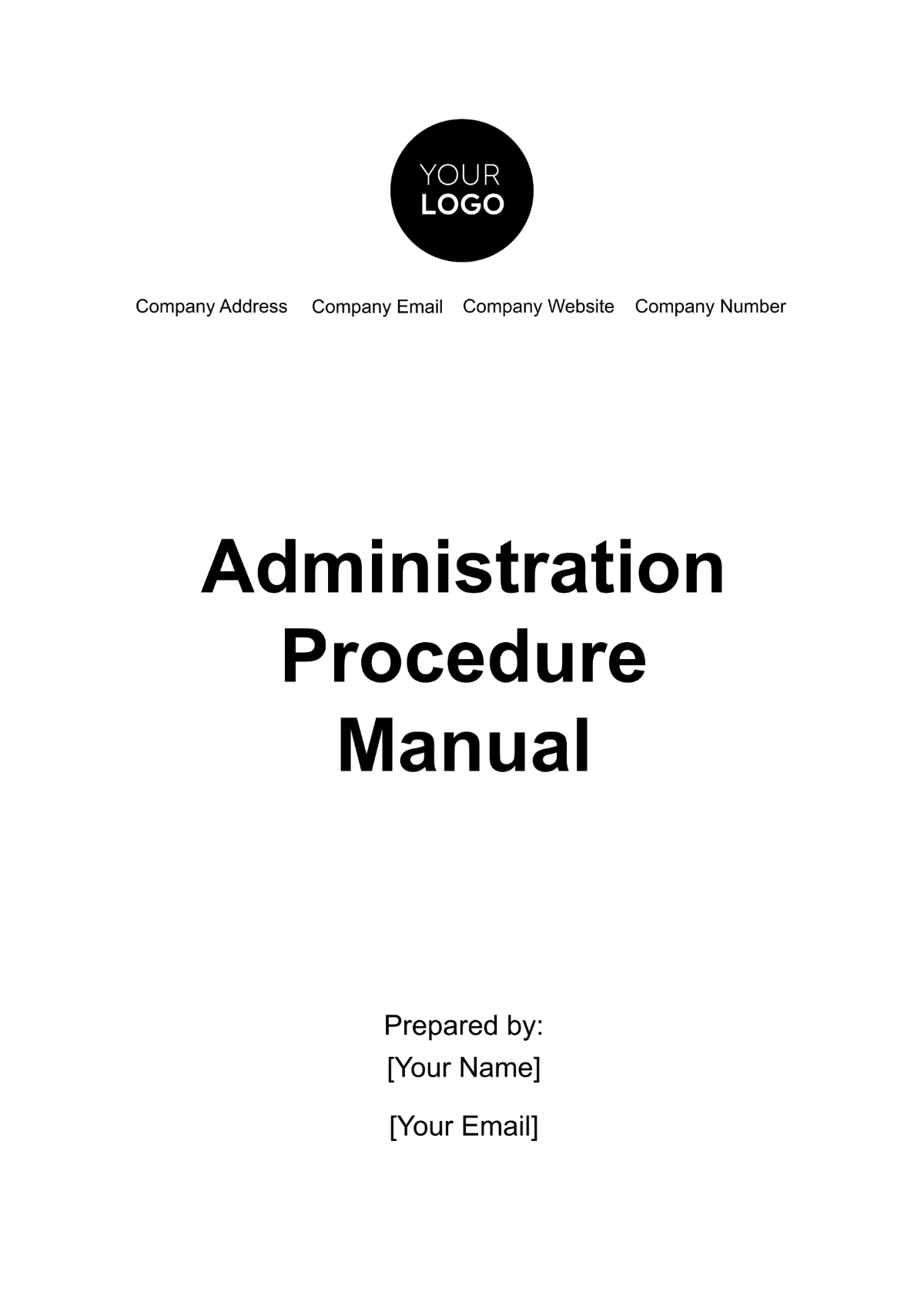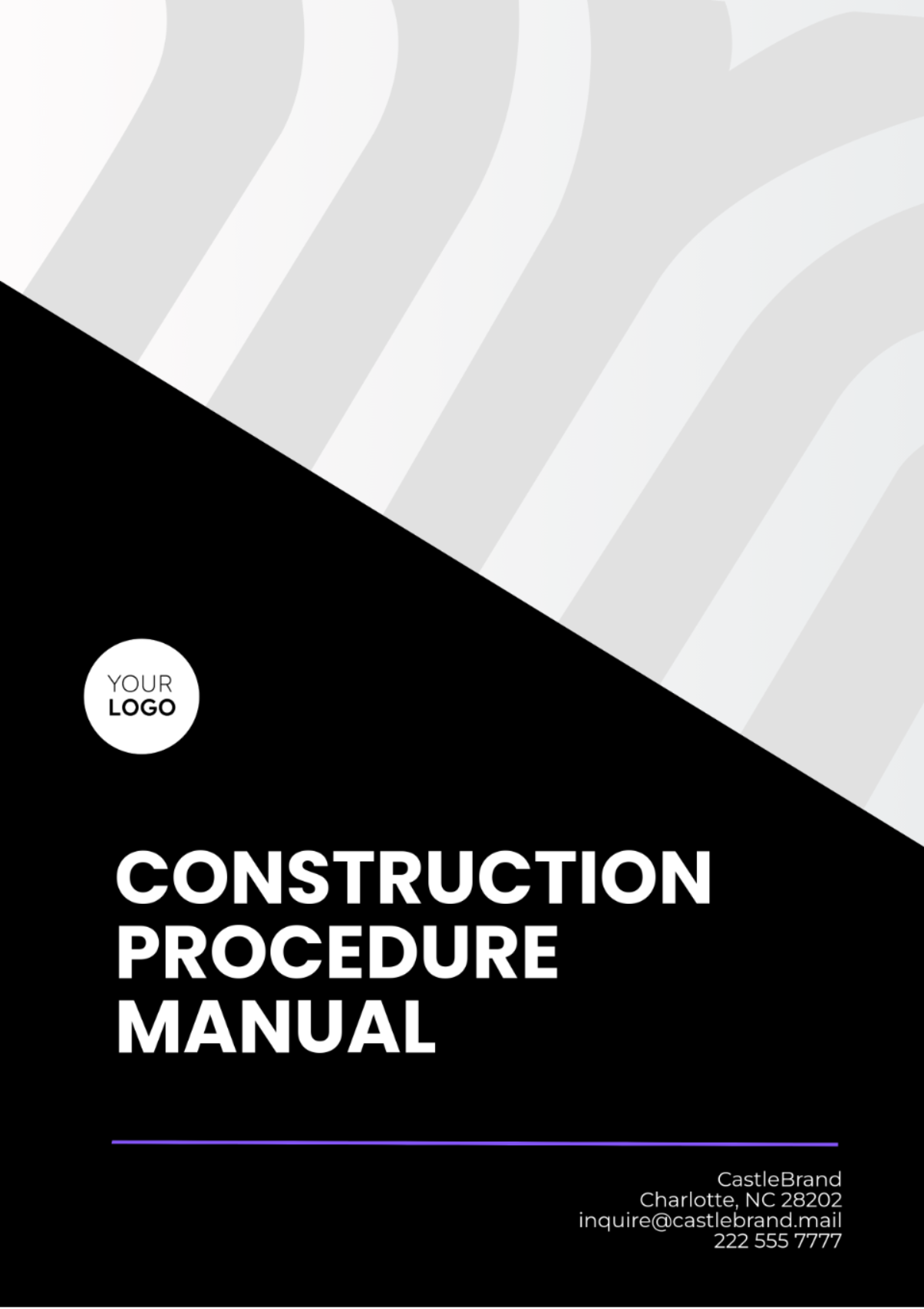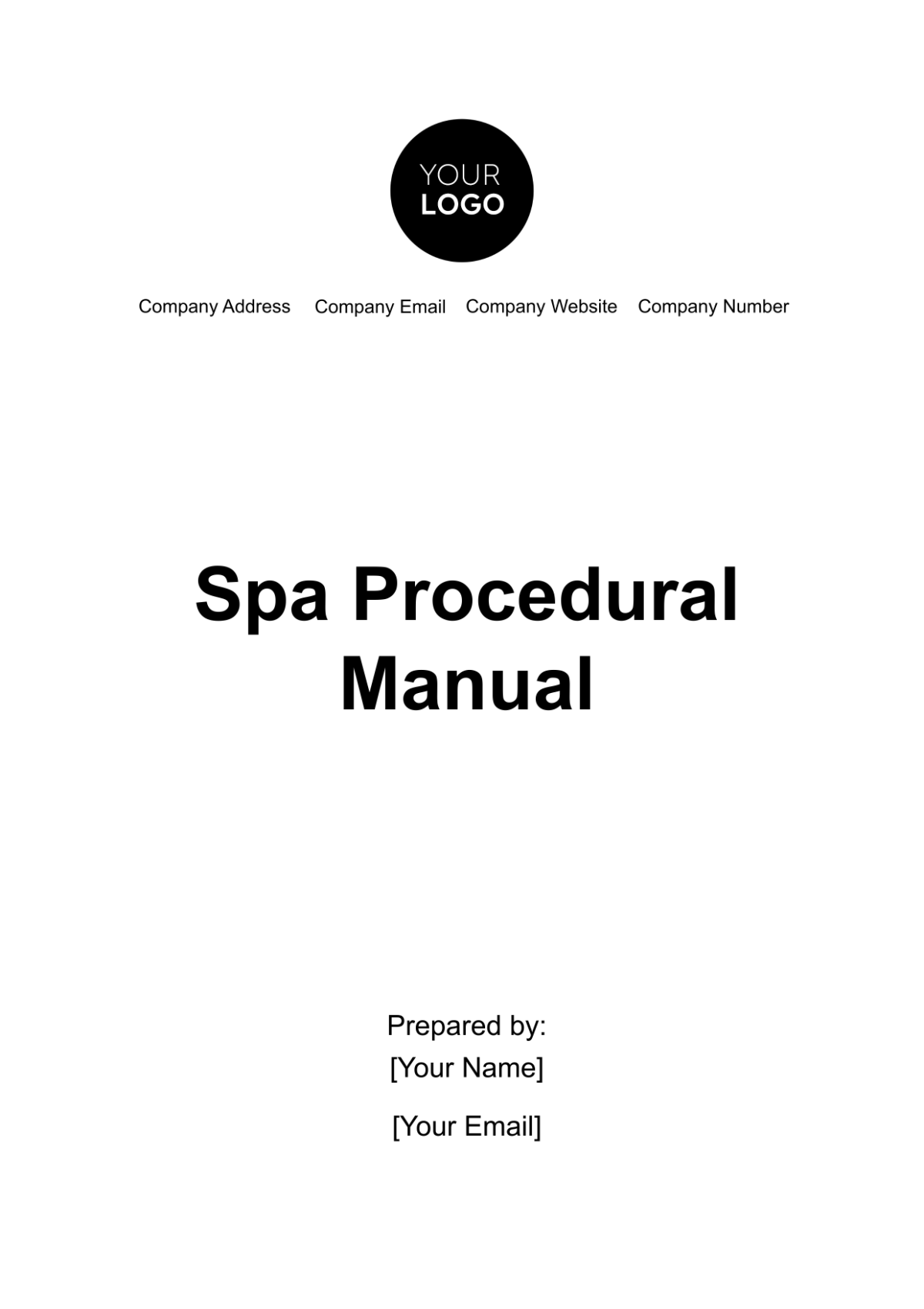Executive Assistant Procedures Manual
Name | [YOUR NAME] |
|---|---|
Company | [YOUR COMPANY NAME] |
Department | [YOUR DEPARTMENT] |
Date | [DATE] |
I. Introduction
Welcome to the [YOUR COMPANY NAME] Executive Assistant Procedures Manual! As an essential member of the team, your role as an Executive Assistant is crucial in ensuring smooth operations and supporting executives in their day-to-day tasks. This manual is designed to provide you with comprehensive guidelines, procedures, and best practices to excel in your role. Whether you are a seasoned professional or new to the position, this manual will serve as a valuable resource to navigate through your responsibilities effectively.
Key Objectives:
Familiarize: Gain a thorough understanding of the duties and responsibilities of an Executive Assistant at [YOUR COMPANY NAME].
Standardize: Follow standardized procedures to ensure consistency and efficiency in your work.
Support: Provide optimal support to executives and enhance productivity within the organization.
II. Getting Started
A. Overview of the Role
As an Executive Assistant at [YOUR COMPANY NAME], you will be responsible for providing administrative support to executives, including managing schedules, coordinating meetings, handling correspondence, and facilitating communication both internally and externally. Your role is instrumental in enabling executives to focus on strategic objectives while you handle administrative tasks efficiently.
B. Company Culture and Values
Understanding the culture and values of [YOUR COMPANY NAME] is essential for aligning your work as an Executive Assistant. Our company prides itself on innovation, collaboration, and integrity. By upholding these values in your daily interactions and tasks, you contribute to maintaining a positive and productive work environment.
III. Administrative Procedures
A. Managing Schedules and Calendars
[YOUR NAME] will be responsible for maintaining accurate and up-to-date schedules for executives.
Prioritize appointments and meetings based on urgency and importance.
Coordinate with executives to schedule meetings, appointments, and travel arrangements efficiently.
1. Schedule Maintenance
Regularly update executives' schedules to reflect changes and ensure accuracy.
Utilize scheduling software or tools to manage multiple calendars effectively.
2. Appointment Prioritization
Assess the importance and urgency of appointments to allocate appropriate time slots.
Communicate any scheduling conflicts or constraints to executives promptly.
3. Efficient Coordination
Streamline the scheduling process by utilizing shared calendars and scheduling tools.
Ensure all stakeholders are informed of meeting times, locations, and agenda items.
B. Communication Management
Screen and direct incoming calls, emails, and correspondence to appropriate parties.
Draft, edit, and proofread correspondence, reports, and presentations on behalf of executives.
Maintain confidentiality and discretion when handling sensitive information and communications.
1. Call Handling
Screen calls to filter out spam or irrelevant inquiries and prioritize important calls.
Provide brief summaries or message taking for missed calls to ensure timely responses.
2. Correspondence Drafting
Craft professional and concise emails, letters, and memos on behalf of executives.
Review outgoing communications for accuracy, tone, and adherence to company guidelines.
3. Confidentiality Protocol
Handle confidential information with the utmost discretion and security.
Implement protocols for secure transmission and storage of sensitive documents and data.
IV. Meeting Coordination
A. Preparing for Meetings
[YOUR NAME] will compile and distribute meeting agendas, documents, and materials in advance.
Coordinate logistics such as room bookings, catering, and audiovisual equipment setup.
Confirm attendance and availability of attendees prior to the meeting.
1. Agenda Preparation
Gather input from executives and stakeholders to create comprehensive meeting agendas.
Distribute agendas and relevant documents well in advance to allow for adequate preparation.
2. Logistics Coordination
Reserve meeting rooms and ensure they are equipped with necessary amenities and technology.
Arrange catering services and special accommodations for participants as needed.
3. Attendance Confirmation
Send meeting invitations with clear instructions and agenda items to all participants.
Follow up with non-responsive attendees to confirm attendance and address scheduling conflicts.
B. During Meetings
Attend meetings to take minutes, track action items, and ensure smooth proceedings.
Facilitate discussions and ensure all agenda items are addressed within the allocated time frame.
Document decisions, action items, and follow-up tasks for distribution post-meeting.
1. Minute Taking
Capture key discussion points, decisions, and action items during meetings accurately.
Summarize minutes promptly after the meeting and distribute them to attendees for review.
2. Facilitation Support
Keep meetings on track by managing the agenda and time allocation for each agenda item.
Foster a collaborative and inclusive atmosphere by encouraging participation from all attendees.
3. Post-Meeting Documentation
Compile meeting minutes and action items into a comprehensive summary for distribution.
Follow up on outstanding tasks and commitments to ensure timely completion and accountability.
V. Correspondence Handling
A. Email Management
Manage executives' email accounts, prioritizing and responding to emails on their behalf. Use discretion when drafting and sending emails, ensuring accuracy and professionalism in all communications.
B. Document Management
Organize and maintain electronic and physical documents, files, and records. Ensure that documents are appropriately labeled, indexed, and archived for easy retrieval.
VI. Technology and Tools
A. Office Software
Executive assistants should be proficient in using office software such as Microsoft Office Suite, Google Workspace, and other relevant tools for word processing, spreadsheet management, presentation creation, and email communication.
B. Calendar and Task Management Apps
Utilize calendar and task management applications such as Microsoft Outlook, Google Calendar, or project management software to efficiently organize and prioritize tasks, appointments, and deadlines.
VII. Professional Development
A. Training Opportunities
Stay abreast of industry trends and best practices by participating in relevant training programs, workshops, and professional development opportunities. Continuously enhance your skills and knowledge to excel in your role as an executive assistant.
B. Networking
Build and maintain professional relationships with other executive assistants and professionals in your field. Networking provides valuable opportunities for sharing insights, exchanging ideas, and gaining support from peers.
VIII. Emergency Procedures
A. Emergency Contacts
Emergency Contact | Contact Information |
|---|---|
Executive 1 | [Executive 1's Phone Number] |
Executive 2 | [Executive 2's Phone Number] |
Emergency Services | 911 |
Security Department | [Security Department Phone Number] |
Human Resources | [HR Department Phone Number] |
Facilities Management | [Facilities Department Phone Number] |
B. Emergency Response Plan
Familiarize yourself with the organization's emergency response plan and protocols. Know your role and responsibilities in emergency situations and follow established procedures to ensure the safety and well-being of all individuals involved.
IX. Performance Evaluation
A. Performance Metrics
Regularly assess your performance as an executive assistant based on established metrics and goals. Seek feedback from executives and colleagues to identify areas for improvement and professional growth.
B. Goal Setting
Set SMART (Specific, Measurable, Achievable, Relevant, Time-bound) goals to guide your professional development and performance improvement efforts. Review and update your goals regularly to ensure alignment with organizational objectives.
X. Conclusion
The [YOUR COMPANY NAME] Executive Assistant Procedures Manual provides a comprehensive framework for executing your role as an executive assistant effectively. By adhering to the procedures and best practices outlined in this manual, you contribute to the success of the organization and the executives you support.

















































